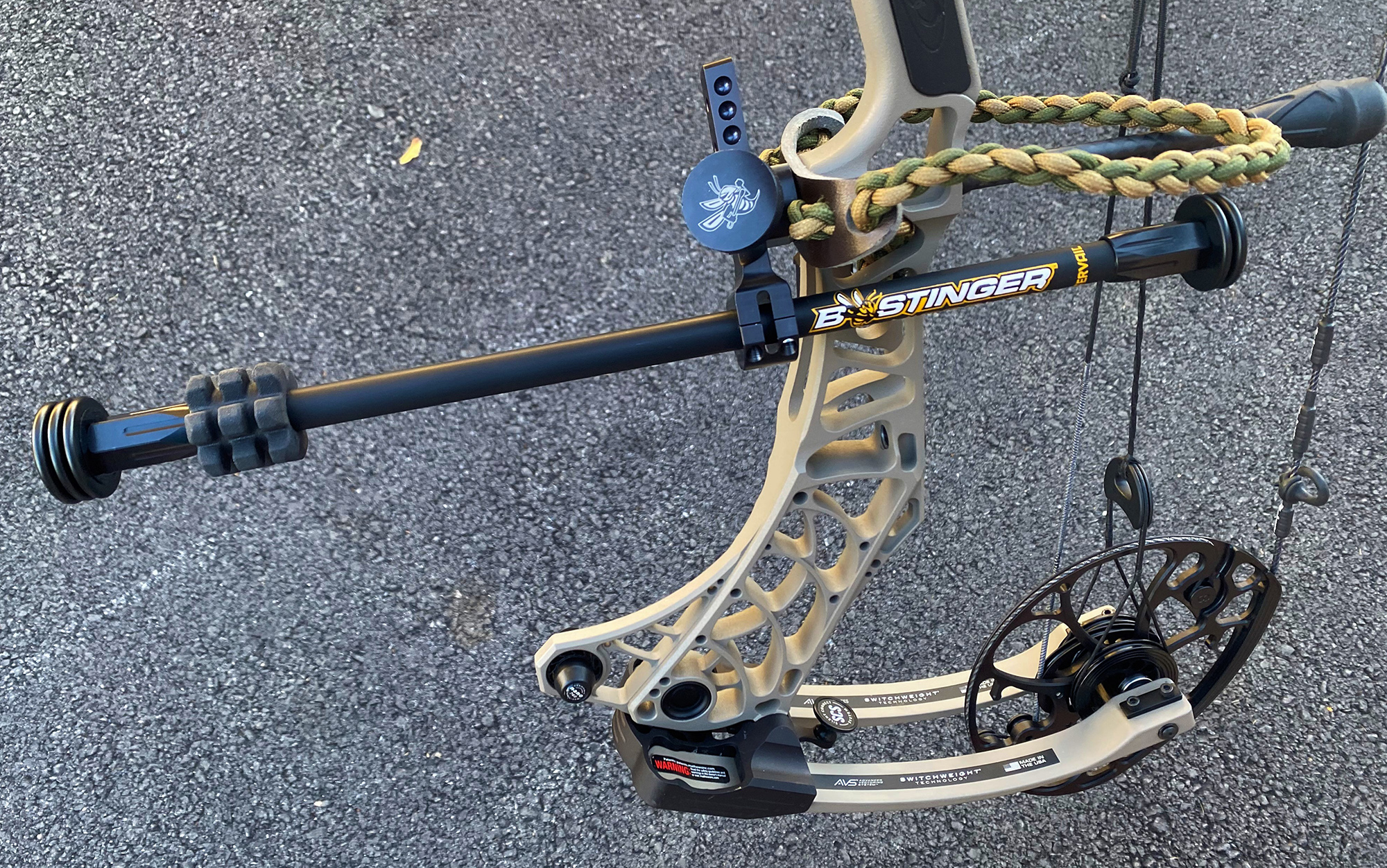Smooth Shots Ahead: Enhance Performance with Compound Bow Stabilizers
Smooth Shots Ahead: Enhance Performance with Compound Bow Stabilizers
Blog Article
Maximizing Your Archery Efficiency With the Right Substance Bow Stabilizer: a Detailed Overview
In the realm of uniformity, archery and accuracy are extremely important to achieving ideal performance. One often-overlooked yet crucial part in enhancing accuracy is the substance bow stabilizer. This unassuming tool plays a considerable role in steadying your objective, minimizing bow torque, and taking in resonances. Nevertheless, the performance of a stabilizer rests on various aspects, including weight, design, and positioning. By recognizing the nuances of selecting and enhancing a compound bow stabilizer, archers can fine-tune their tools to raise their capturing experience to brand-new degrees of efficiency and control.
Relevance of Bow Stabilizers in Archery

Furthermore, bow stabilizers help in balancing the weight circulation of the bow, which can boost the archer's security while intending and shooting. By adding weight to the front of the bow, stabilizers can decrease the quantity of torque experienced upon release, causing a smoother and extra controlled shot - compound bow stabilizer. This weight circulation additionally aids in holding the bow constant for a longer duration, enabling the archer to intend more precisely
Kinds Of Substance Bow Stabilizers
When considering the different types of compound bow stabilizers readily available, it is important to understand their distinctive attributes and features to figure out the most ideal option for optimizing archery performance. The most usual types of substance bow stabilizers include sidebar stabilizers, front stabilizers, and back stabilizers. Back stabilizers, likewise called rear stabilizers, are placed to the back of the bow and assist in counterbalancing the weight of various other accessories, resulting in boosted stability and steady aiming.
Aspects to Consider When Picking
In reviewing compound bow stabilizers, understanding the unique attributes and features of each kind is crucial for making a notified decision on one of the most appropriate alternative to boost archery performance. When choosing a stabilizer, one should think about the weight of the stabilizer itself. While a larger stabilizer can supply more stability by minimizing the bow's activity, it might additionally create exhaustion throughout long shooting sessions. Balance is one more vital variable to contemplate. The stabilizer's size address and layout dramatically impact the bow's balance, impacting the shooter's ability to hold consistent goal. In addition, the material of the Read More Here stabilizer can influence its performance. Carbon fiber stabilizers are light-weight and soak up vibrations well, boosting precision. Furthermore, the number and adjustability of dampeners on the stabilizer can tweak its efficiency by reducing sound and shock upon launch. By meticulously assessing these elements, archers can pick a compound bow stabilizer that aligns with their shooting style and optimizes their total efficiency on the archery range.
Setup and Adjustment Tips
For ideal efficiency and precision in archery, mastering the setup and modification of your bow stabilizer is essential. Appropriate installation begins with connecting the stabilizer to the bow's riser, ensuring it is firmly safeguarded.
When readjusting the stabilizer, start with little step-by-step modifications instead than drastic modifications. Pay focus to how the bow responds to adjustments in stabilizer settings and make adjustments accordingly. Routinely check the stabilizer's rigidity and overall condition to ensure it continues to work optimally.
Upkeep and Care Standards

When not in use,It is also vital to save your bow with the stabilizer in a secure and safe location. compound bow stabilizer. Prevent leaving it in extreme temperatures or subjected to route sunlight for prolonged durations, as this could trigger damages to the stabilizer. Periodically check the stabilizer's placement to ensure it is still correctly placed on your bow. Following these maintenance and care guidelines will certainly assist you obtain one of the most out of your bow stabilizer and boost your general archery performance.
Final Thought
To conclude, selecting the right substance bow stabilizer is important for maximizing archery efficiency. Recognizing the relevance, types, aspects to think about, installment and change suggestions, as well as upkeep and treatment guidelines can significantly influence one's accuracy and uniformity in shooting. By choosing a stabilizer that suits specific requirements and choices, archers can improve their overall performance and accomplish much better results on the range or in competition.
Bow stabilizers play a vital function in improving an archer's accuracy and consistency by lowering vibrations and stabilizing the bow during the release of an arrowhead - compound bow stabilizer.Furthermore, bow stabilizers assist in balancing the weight distribution of the bow, which can boost the archer's stability while aiming and firing. The most common types of compound bow stabilizers consist of sidebar stabilizers, front stabilizers, and back stabilizers. Back stabilizers, likewise called back stabilizers, are installed to the back of the bow and help in counteracting the weight of other devices, resulting in enhanced stability and constant intending. When selecting a stabilizer, one need to consider the weight of the stabilizer itself
Report this page